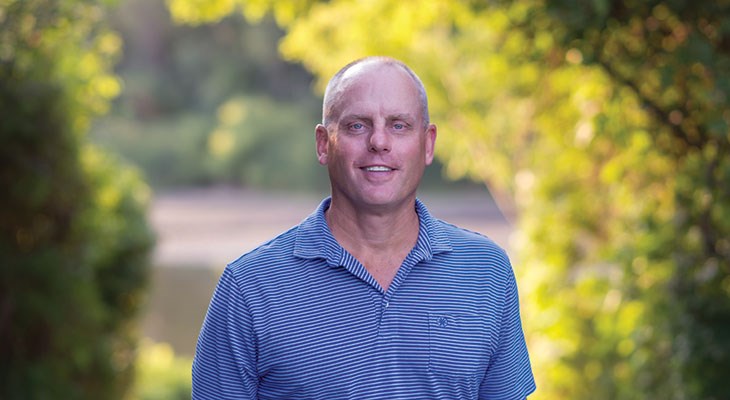Brendan Anderson has witnessed the frustration of early-stage founders being told what they need to scale their business.
Through his time at Evolution Capital Partners, which invests capital in micro-market companies nationwide, he would often be in a position of asking about financials or sales pipelines or some other critical element to a growing business.
“There were times where the executives viewed us as more of a burden,” Anderson says. “We were coming in saying we need all this stuff and they're like, ‘Well, we need to run the business.’ For them to go off and do those things, they would need to hire someone for $150,000 or more who has to learn their business, learn their systems and manage all those things.”
Anderson launched ScaleCo to be more of a partner in this effort, using a permanent capital investment model to develop sustainable growth platform companies. His ultimate goal is to create a collaborative ecosystem where entrepreneurs, service providers and investors can network to share ideas and best practices.
Change will not come easy, however, says ScaleCo Vice President Michael Martof.
“It's literally our hardest time when we walk into an investor and say we do sub-middle-market deals,” Martof says. “And they say, ‘I’ve heard of that.’ And we say we do long-duration capital. And they say, ‘We’ve heard of that. But the two together?’”
Extend the journey
The traditional private equity model is to invest in a company, provide capital to help that company grow and then exit after three to six years. It’s a proven model, but it can be frustrating for some people to invest in a company and then part ways just as business starts to take off.
“If you look at some of Evolution’s greatest growth stories, we sold to other private equity funds that made lots and lots of money because the system is in place, boom and go,” Anderson says. “That’s not a knock on Evolution. They just ran out of time. You get that company there and you're like, ‘OK, it's been six years. I need to sell.’”
Anderson created ScaleCo as a company that provides more time and more resources, creating a path to scalability. One of the key benchmarks to achieving that goal is typically reaching $2 million in EBITDA.
“The world for cash flow lending opens up for companies that hit $2 million in EBITDA and there's a line out the door of banks that are going to come offer you capital,” Martof says. “For the guys that are kind of sitting underneath that and have a traditional business that isn’t growing, it's almost impossible to find capital.
“For everybody who is not a tech startup and not a true middle market business with $2 million-plus in EBITDA, there's no solution out there for them. That's kind of the original thought that drove everything was that these guys need money. There's really amazing businesses out there and really great people to back out there that frankly just need a little extra capital and a partner.”
Get over the hump
Rather than hire outside personnel to tackle the essential functions of an early-stage business, ScaleCo’s model is take responsibility for these duties.
“We help them build processes quickly,” Runnestrand says. “There are relatively inexpensive systems for marketing, for sales, for process-driven ways of doing things. Instituting those in the business and bootstrapping that for a year allows them to get immediate growth and they start seeing the first signs of scale.”
At that point, if all goes according to plan, the company is expected to be in position to begin making hires and start to establish itself as a sustainable company.
“A person with a system is far more powerful than hiring the person and just hoping that the system comes,” he says. “Then the capital, not only does our initial investment start to pay off and we start to see growth, but the business itself with that growth can start to fund more scale. So it's just getting them over that hump.”
The other benefit to investing for a longer duration is it removes the distraction of worrying about exits and liquidity events, Martof says.
“We can prioritize value creation over that liquidity risk and accelerate growth through that period where they're typically would be an exit,” Martof says. “The ways that we’ll do that is by exploring more consolidation at that four- or five-year mark and using the existing balance sheet, which is quite frankly unlevered the vast majority of the time.”
ScaleCo doesn’t typically use a lot of debt in these transactions, Martof says.
“It’s more a buyout than a leveraged buyout,” he says. “We’re providing growth equity. When we acquire a business, instead of the company having debt on board, they typically have up to $1 million of growth capital on the balance sheet that they can invest in the business post transaction, which is very different than a private equity leveraged buyout. It’s somewhere between venture and private equity. But it’s different from both.”
Anderson is confident that his investment approach is scalable. His goal is to show others how it can work and help entrepreneurs succeed, specifically in Northeast Ohio.
“I know we can do what we're planning to do,” Anderson says. “Having said that, it's new. Generally investors don't like new stuff. They want to put it in a private equity box or an investor box. We don't have a huge base here in Northeast Ohio. A lot of our investors are not from here. It would be a whole lot more fun if we had more Cleveland participation or Northeast Ohio participation. We get a lot of value from our investors and if they were more local and getting more interaction with the leadership teams, that would be better.”
Photo: Little Boo Photography




